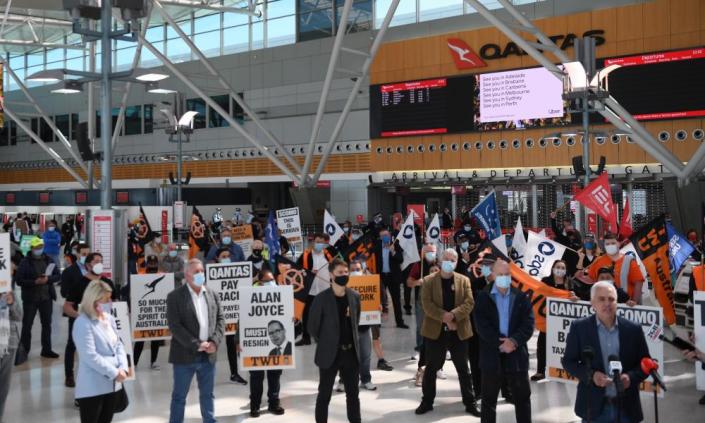Joe Hinchliffe
Mon, 23 January 2023

Photograph: Jono Searle/AAP
Renewed questions are being asked about Australian councils’ use of international projects to offset local carbon emissions, off the back of a Guardian investigation that found 90% of rainforest credits issued by one leading company were likely worthless.
The research into Verra, a world leader in the rapidly growing voluntary offsets market, found that the majority of rainforest offset credits were likely “phantom credits” and do not represent genuine carbon reductions.
The company strongly disputes the studies’ conclusions, has strenuously defended its projects and challenged the methods used to undermine their credibility, saying they cannot capture the true impact of projects on the ground. They say this explains the difference between the credits it approves and the emission reductions estimated by scientists.
But the revelations have energised critics of public entities for using offsets rather than concentrating on reducing their own emissions.
Fifteen local governments in Australia, including those in central Sydney, Melbourne, Brisbane and Adelaide, trade offsets through Verra’s registry platform, spending millions of dollars to claim carbon-neutral status.
While the vast majority are not the rainforest credits that were the subject of the Guardian investigation, and its findings are not applicable to them, they are mainly for overseas-based projects, prompting questions about why local governments aren’t spending that money trying to reduce their own emissions.
Brisbane city council, Australia’s largest local government, spent $6 million last year offsetting its emissions, including banking 130,000 tonnes of carbon emissions on a landfill gas recovery and power generation project in China.
University of Melbourne climate futures senior research fellow Lily O’Neill described it as “a joke” that an organisation whose core function is to dispose of waste would spend money reducing emissions on that same activity offshore.
O’Neill said that offsetting was only valid as a last resort for emissions that could not be avoided.
“Does anybody [at council] go out and check that these carbon credits are being generated in the way that they say they will be?” she said.
Brisbane city council did not respond to Guardian Australia questions about what due diligence it does on overseas offsets projects.
The Labor opposition in Brisbane, led by Jared Cassidy, has long been critical of council’s offset spending and described the Guardian investigation as a “wake-up call”.
Related:Qantas, Origin and other Australian companies urged to check effectiveness of overseas rainforest carbon credits
“The only large-scale action a council can take to reduce emissions on a citywide scale is remove organic material from landfill,” he said. “You can’t simply buy your way out of it.
“If you want to make real change you start in your own back yard.”
O’Neill said there were high-value offset projects that were working, including First Nations-led emissions reductions projects.
Brisbane was among the councils that did fund some Australian-based initiatives, including Indigenous-led savannah fire management in Arnhem Land. But more than 90% of Brisbane city council’s offset funding was spent on projects abroad.
Many other councils – including Woollahra in Sydney, Subiaco in Perth and Moreland, Moonee Valley, Maroondah and Yarra in Melbourne – obtained 100% of their credits from overseas-based renewable energy projects.
Queensland University of Technology’s pro vice-chancellor of sustainability and research integrity, Kerrie Wilson, also advised that local governments should be “looking at things in their own back yard” as they strive to achieve carbon neutrality.
“That’s challenging, because it requires a focus on our internal policies and our own practices and our own behaviours rather than relying on offsetting,” she said.
Wilson said QUT had invested in a solar farm in western Queensland in an effort to achieve carbon neutrality.
“You have more oversight, transparency and assurance around the integrity if they are projects that you can touch and feel and identify,” she said.
Brisbane city council did not respond to questions about whether it was reviewing its offset program but did say it was currently undertaking “a major food waste recycling pilot involving 6,000 households across 30 suburbs”.
A City of Sydney spokesperson said that over the past few years it had been “buying an increasing share of high-quality local carbon offsets” and aimed to have 100% high-quality Australian regenerative offsets by 2025.
The City of Melbourne is understood to be reviewing its past and future offsets following the Chubb review, which this month recommended a new integrity body be set up for Australia’s carbon credits scheme.














